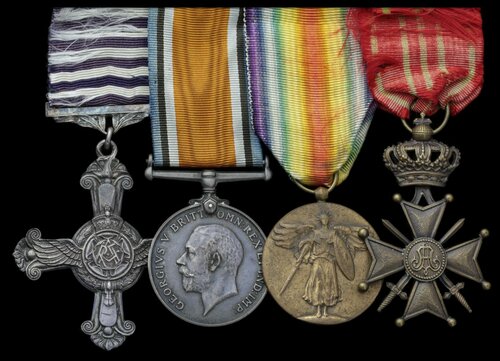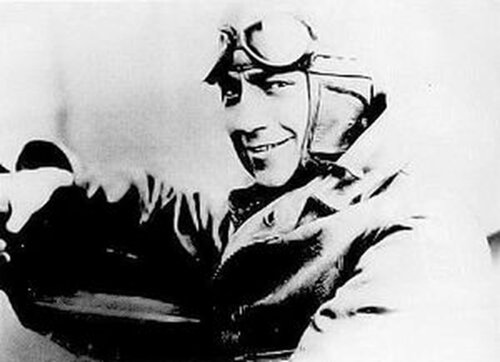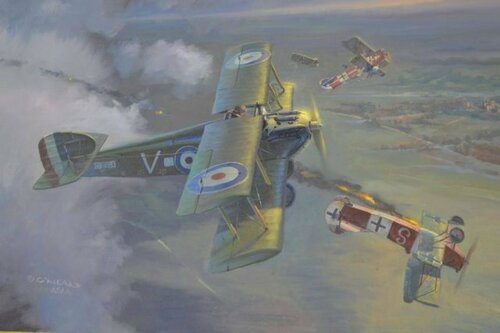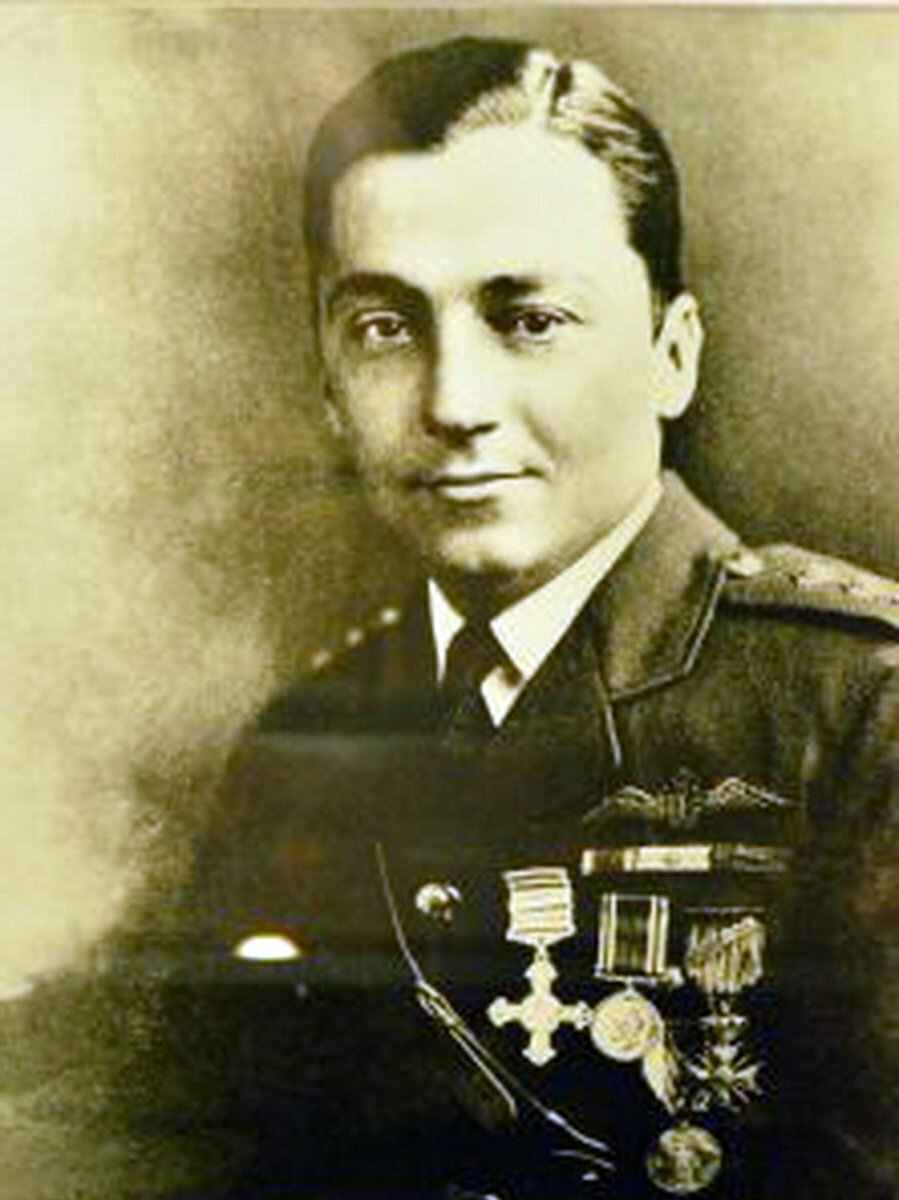Auction: 21003 - Orders, Decorations and Medals
Lot: 544
(x) A rare and important Great War American ace’s D.F.C. group of four awarded to Captain F. W. Gillet, Royal Air Force, late Royal Flying Corps and American Aviation Corps: also entitled to a Bar to his D.F.C., he ended the war with 20 confirmed victories, including three kite balloons, a score that placed him second only to the great Edward Rickenbacker
Distinguished Flying Cross, G.V.R.; British War Medal 1914-20 (Capt. F. W. Gillet. R.A.F.); U.S.A., Victory Medal; Belgium, Kingdom, Croix de Guerre 1914-18, mounted as worn, the last with slightly dented obverse centre, otherwise good very fine (4)
D.F.C. London Gazette 2 November 1918:
‘When attacking a kite balloon, a two-seater guarding it advanced to engage him; Lieutenant Gillet shot the machine down and turning to the balloon, which was rapidly being hauled down, he dropped two bombs at the winch and fired a drum of ammunition into the balloon, which deflated but did not catch fire. In addition to this two-seater, this officer has accounted for two other machines and a kite balloon.’
Bar to D.F.C. London Gazette 8 November 1919:
‘A pilot of great dash and skill who, since 3 August 1918 has destroyed twelve hostile aircraft. On 29 September, when on low line patrol, he attacked three Fokkers, driving down one, which fell in flames.’
Frederick Warrington Gillet, who was born in Baltimore, Maryland in 1895, entered the American Aviation Corps at Newport News as a Sergeant in April 1917. Having qualified as a pilot, he was sent to the University of Illinois, but finding too many cadets and too few planes to fly, he crossed over the border to Canada and volunteered his services to the Royal Flying Corps. Duly granted a commission as a 2nd Lieutenant on the General List, he sailed for England and joined No. 91 Squadron on his arrival at the end of the year.
Subsequently confirmed as a Flying Officer, he transferred to No. 79 Squadron in France in March 1918, and commenced his remarkably rapid tally of victims with the destruction of a kite balloon north of Estaires on 3 August - in took a little over 12 weeks from this point to reach his confirmed total of 20 victories. A Fokker DVIII, the first of fourteen, was the next enemy aircraft to fall to his guns, this particular one being brought down north-east of Estaires on the 18th. And he closed his combat successes for the month with a DFW.C on the 24th, following a dogfight two miles east of Ballieul.
On 1 September Gillet gained two more victims and the D.F.C., his combat report for the action stating:
‘I dived through the clouds east of Armentieres to attack a kite balloon. As I approached the K.B. I saw an enemy aircraft flying at about 1500 feet. I opened my throttle and dived on him, firing about 200 rounds at about 100 yards range. The E.A. dived and the observer fired a burst at me. I followed the E.A. down and fired another 150 rounds at very close range. The E.A. crashed into the ground. I then returned west towards the balloon which was being pulled down and fired 50 rounds into it at very close range, dropping two bombs near the winch. The balloon was hauled down and appeared to be deflating. The balloon was not observed to catch fire. The fire from the ground was very erratic after I dropped my bombs.’
Four days later, once again east of Armentieres, Gillet brought down a Fokker DVIII, and on the 21st a similar aircraft fell to his guns in a dogfight between Harbourdin and Wavrin. On the latter occasion he fired 150 rounds, the wing of the enemy aircraft collapsing before it crashed into a railway line in a wood. Gillet’s score now started to escalate rapidly, two more Fokkers and an Albatross C. falling to his guns before the end of the month, the latter after a combat over Passchendaele.
Advanced to Captain and made a Flight Commander in October 1918, he got the month off to a good start with the destruction of a kite balloon four miles east of Roulers on the 2nd, a Fokker over Courtrai on the 5th, and a brace of the same in combats over Menin and Gulleghem on the 8th, one of these crashing into a field and the other bursting into flames on impact with ground. Again, on the 14th, in two separate dogfights, he downed Fokkers over Inglemunster and Gits, the latter victim spinning into the ground near a canal. On the 17th of the same month, however, for reasons unknown, he was briefly hospitalized, but he was back in action by early November when he downed a Fokker DVIII west of Renaix on the 4th. But his greatest moment came on the 10th, when in a quickly fought engagement - some sources say just five minutes - he was credited with the destruction of three Fokker DVIIIs, two of them actually colliding north-west of Besseghem.
Gillet was released form the R.A.F. in March 1919, a Belgium Croix de Guerre being added to his D.F.C. that July, and a Bar to his D.F.C. in November. He subsequently returned to the U.S.A., where he entered into a variety of business ventures, and died there, at Baltimore, in December 1969.
In 2016, the Western Front Association East Coast Branch (USA) commissioned noted aviation artist Michael O’Neal to create the commemorative painting Maryland over Flanders for permanent display at the War Memorial Building. O’Neal’s stunning work – rendered in oil on Belgian linen – depicts Gillet’s Sopwith Dolphin fighter emerging from the clouds with two German Fokker D.VII’s falling away on either side. The painting – based on an actual event – recalls a harrowing dogfight Gillet won near the end of the war. The painting was unveiled at the Memorial Building on North Gay Street in Baltimore in the presence of his grandson and great-grandson, besides Paul Cora, President of the Baltimore Chapter of the Western Front Association; Colonel Robert J. D’Alessandro, Chairman of the United States World War I Centennial Commission; David Craig, head of the Maryland World War I Centennial Commission; and Alan Walden, former mayoral candidate and news commentator at WBAL-AM.
Subject to 5% tax on Hammer Price in addition to 20% VAT on Buyer’s Premium.
Sold for
£5,800
Starting price
£3200











